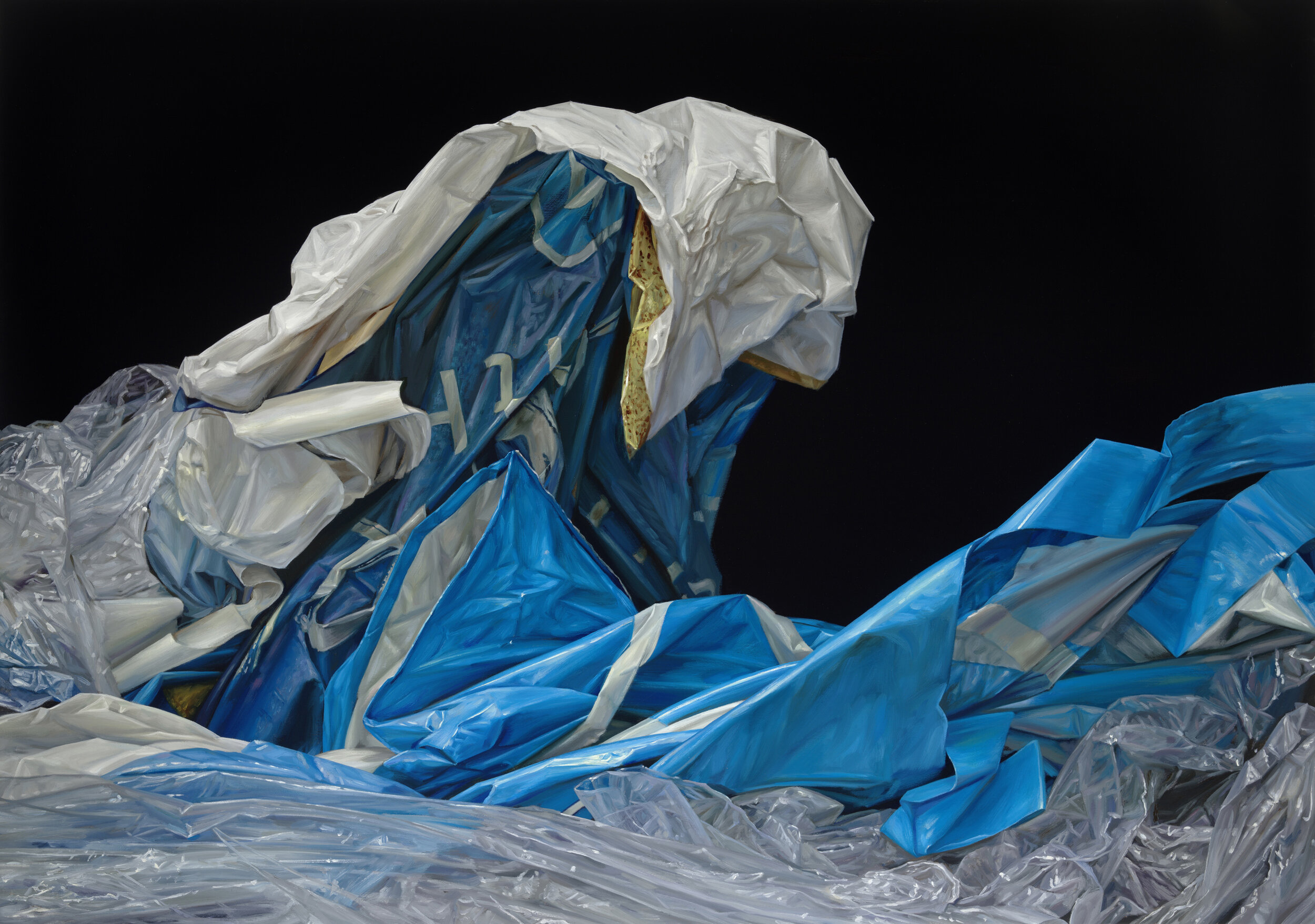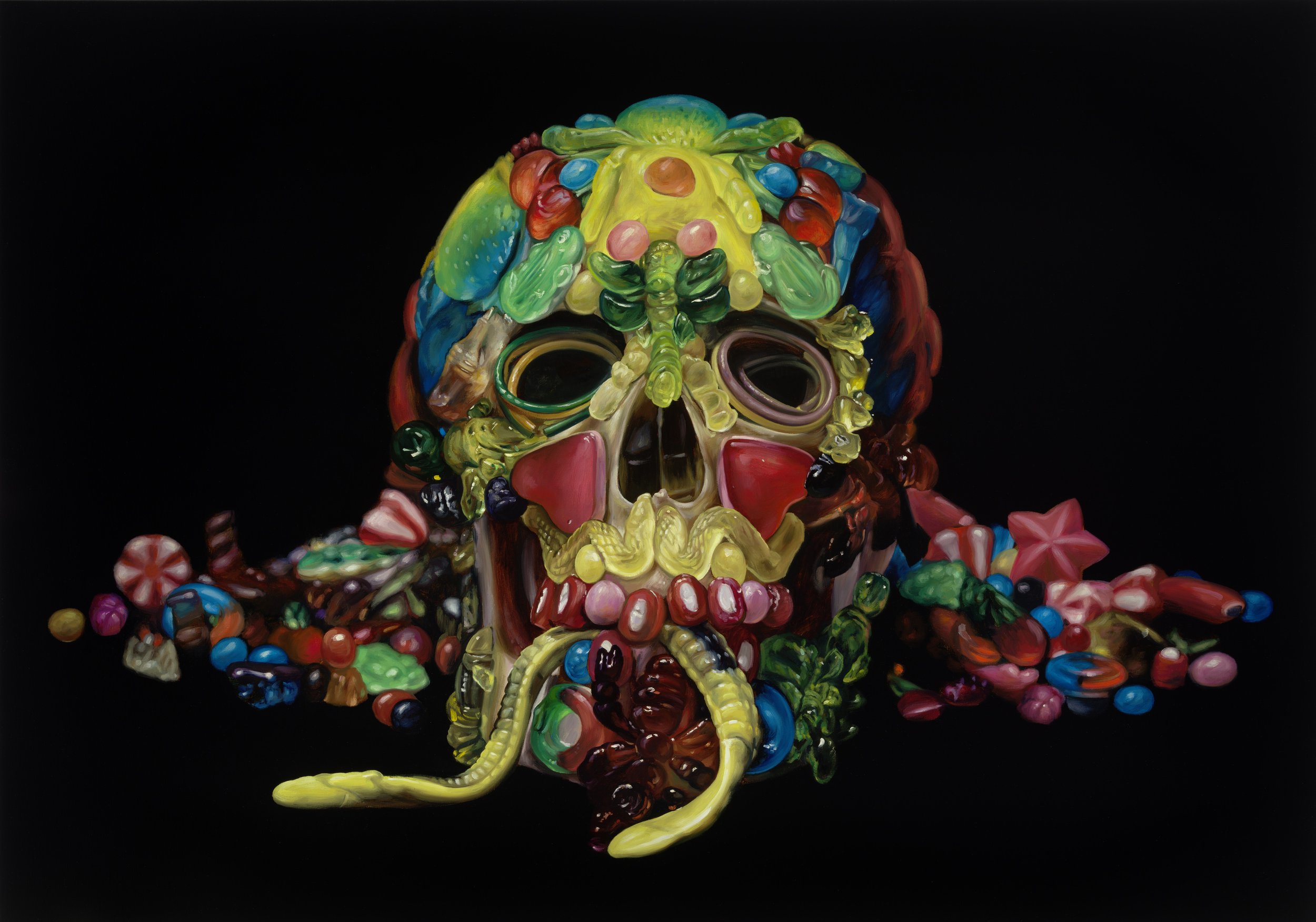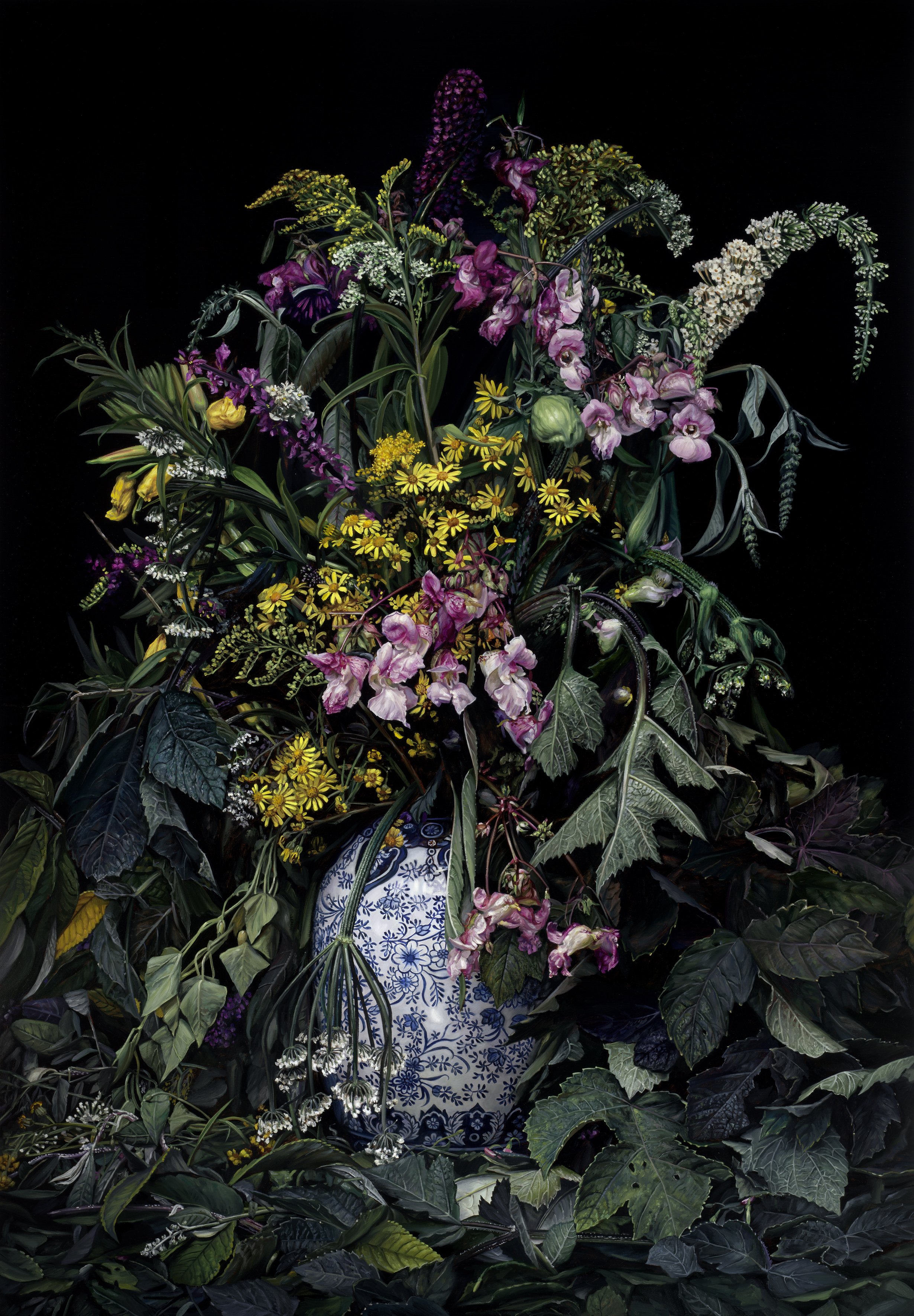TRASH & TREASURE
CINDY WRIGHT
16/10/2021 > 22/01/2022






CINDY WRIGHT
Cindy Wright is an artist born in 1972 in Herentals. When she was a child, drawing was a way of escaping boredom. The hobby soon turned into a real passion. In 1996 she obtained a Master's degree in Visual Arts at the Royal Academy of Fine Arts in Antwerp. In 2006 she became a laureate of the prestigious Antwerp Institute of Fine Arts.
During her studies at the academy, her meeting with Fred Bervoets was to be decisive. A prolific painter and engraver, he tells “his” world in a raw style. He lives for and through his art. He taught Cindy Wright the need to develop her personal discourse: how to start from oneself, from one's experiences and emotions, how to give meaning to one's work and to share it with the public.
And indeed Cindy Wright observes the world around her, which she casts a sharp, relevant eye on. She puts our daily lives under the microscope, tackling subjects as vast as the consumer society, technological progress, pollution, our food, the biological materiality of living beings. She wants her work to be a testimony, a trace of her time and her environment and, ideally, to generate a dialogue between the artist and the observer.
She lives and works in Antwerp. Her work has been exhibited in many European countries and in the United States.
HER WORK
Cindy Wright creates works that tend towards hyperrealism, that are often of monumental size, and based on photographs. Her subjects are portraits, still lifes and organised objects. Photography quickly proved to be an indispensable tool. It allows her to interpret and study the nature of certain objects through the lens; to create an image that is very familiar to us, but at the same time carries a content different from what we are used to seeing in the flow of everyday popular images. Photography allows her to magnify details that are sometimes invisible to the naked eye or, since she often depicts organic matter, to freeze what she sees and thus work for several weeks on a composition that would otherwise deteriorate.
Cindy Wright is constantly observing her environment, photographing it and collecting images that might inspire her: a spider's web, a light, a dead fly on a window sill, a rotting fruit. She collects objects too : whether insignificant or more original and disconcerting (human skulls, for example), they have a great potential for expression. Not all objects end up in a work of art, she stockpiles them until the day when a deeper emotion or desire will trigger a particular composition. In that work of art the objects will be given a new reality in order to express a particular idea.
The composition is photographed and then translated onto the canvas. Technical challenges have to be met to achieve the desired result. This process is sometimes quick and sometimes tedious, but in no way should it be visible to the viewer. For Cindy Wright, painting is about interpreting what she sees, rendering the textures and translating them into layers of colour, gestures, and brush strokes that are abstract when we come closer, but that disappear into a smoother, more photographic image when we move away. Thus we oscillate between an objective and cold reading and an expressive and emotional reading. This toggling or zooming in and out, is essential to a full appreciation of Cindy Wright's work.
Fundamentally, her work deals with the physical materiality of the living world and the place and role of man in that world. It is about human life, but also about animal and plant life and man’s ranking of these. This living world is observed through a biological magnifying glass: organic matter, its growth, decomposition and therefore irremediable death are put in full light. We get to see images of flesh, meat, skin, dead animals or rotting fruit. Wright is fascinated by the wonders generated by nature but also by the images created, which are disturbing and even repulsive and unacceptable for man. The evocation of death is disturbing but closely associated with life.
To emphasise her point, Cindy Wright uses a double 'zoom' effect: her subjects, usually quite small in real life, are first presented in close-up in a rather tight frame, and next enlarged onto monumental canvases.
What might be surprising, despite the subjects, is that the paintings remain wonderfully aesthetic. The beauty of each subject is emphasised. It is indeed Cindy Wright's trademark to produce images that always provide possible opposing interpretations. Every living phenomenon worthy of wonder, admiration, pleasure and desire holds the source of its unbearable and repulsive opposite. Cindy Wright reminds us that speaking of life is also speaking of death, speaking of beauty is speaking of decrepitude, speaking of technological progress means speaking of excess and destruction.
Cindy Wright offers us a double-sided painting, which can be read in any direction. Depending on your inclination of the moment, you can see the two sides of the same reality.
TRASH & TREASURE
In a dozen masterful works, Cindy Wright explores the cycle of life and the planet. Through its exchanges of matter and energy with its environment, the living world produces wonders and generates waste, it reproduces and dies. This is characteristic of life. Man has a special place in this cycle because he has always sought to protect himself better, to improve his living conditions and to live longer. With the help of the natural environment, man has gone from the first wild cereal crops to intensive agriculture with a lot of fertilisers, from his bare feet to the wheel and aeroplanes, from the domestication of fire to nuclear power stations. The results are prodigious, but the machine seems to have gone haywire. And the notions of wonder and waste are no longer clear, there is confusion. Biodiversity has collapsed, pollution is contaminating the soil and the air, the climate has derailed. At the same time, the population is growing exponentially. Man has disrupted the natural balance so badly that he may well become the “waste” of his own inventions and condemn the planet
Cindy Wright has been concerned about the impact of humans on the planet right from her early work. The exhibition Trash & Treasure emphasises these aspects even more and responds to the growing awareness of this theme. Today’s major concern is nothing less than the survival of the planet and its inhabitants, jeopardised by human behaviour and progress. Not all inventions are bad, however, and Cindy Wright wants to highlight the ingenuity of human beings to find solutions, to save themselves. The challenge is greater than ever but she remains optimistic.
The works on display are once again “heads and tails” works. They remind us that all progress contains the seeds of its own destruction, but also highlight the adaptability and intelligence of man. Hydroponic shows the efficiency potential of water cultivation, but also the loss of contact with nature and the negative effects on taste. Paradise Lost is about both protecting rare species and pollution. Invasive Bouquet reveals that a wealth of fabulous plants can actually hide a threatening invasion, relegating useful plants to the rank of waste.
Carni Terrae, literally from Latin “the fleshes of the earth”, refers to the overproduction of meat to the detriment of the earth through all the excesses generated (deforestation, pollution, greenhouse gas emissions) but also to the fact that human beings, being mammals, are also made of flesh. This leads us back to our elemental essence, we are made of atoms and are part of the great cycle of life: we are born, grow, wither away and die.
Carnes Terrae holds a special place at the centre of the Jerusalem Chapel, where it replaces the mausoleum of Anselm Adornes and Margareta van der Banck temporarily removed for restoration. Emphasising the physical and carnal nature of man, this work finds a surprising echo in the spiritual function of the chapel. At the sight of this piece of flesh, we may wonder: “What is the meaning of all this? If man does indeed disappear from the planet, will anyone care? Will he really have been just a piece of flesh soon forgotten?" But this is a very different and personal story.
Véronique de Limburg Stirum
More information: www.cindywright.org
